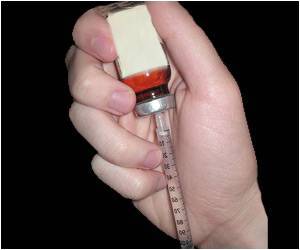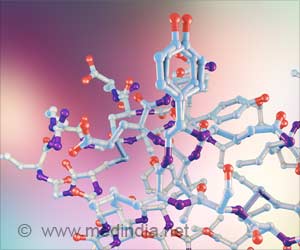US researchers seem to have identified a new target for treating dysentery.
US researchers seem to have identified a new target for treating amoebiasis. They say rhomboid enzyme EhROM1 could be that target.
Every year, about 500 million people worldwide are infected with the parasite that causes dysentery, a global medical burden that among infectious diseases is second only to malaria. In a new study appearing in the June 15 issue of Genes and Development, Johns Hopkins scientists say they may have found a way to ease this burden by discovering a new enzyme that may help the dysentery-causing amoeba evade the immune system."This is the first enzyme to be identified that looks like it could mediate immune system evasion," says Sin Urban, an assistant professor of molecular biology and genetics at Hopkins.
E. histolytica is a single-celled intestinal parasite that infects the lower GI tract, causing amoebiasis, and can invade the intestinal wall and spread to the bloodstream, causing potentially fatal amoebic liver abscesses. The parasite is transmitted through fecally contaminated food or water, and is a major public health threat in the developing world.
The EhROM1 enzyme, it turns out, is part of an ancient group of enzymes—they are found in every branch of life from bacteria to man—known as rhomboid enzymes. In most animals, rhomboid enzymes seem to play a role in cell-to-cell communication, but a couple of years ago Urban found that malaria parasites use rhomboid enzymes for a more sinister purpose: to enter host cells uninvited.
That led his team to scour the DNA of other parasites to see if any of them also had genes that encode rhomboid enzymes. They found that the dysentery-causing amoeba Entamoeba histolytica contains one rhomboid enzyme and named it EhROM1.
"Plasmodia, the parasites that cause malaria, grab onto a host cell and push their way in," explains Urban. "Once inside they use rhomboid enzymes to cut themselves loose." But amoebas don’t enter cells to cause dysentery, so Urban’s team set out to figure out how these parasites use EhROM1.
Advertisement
Every cell has on its surface proteins recognizable by sentries of the immune system that constantly survey the body for intruders, and amoebas are no different. To evade the immune system, amoebas shift all their surface proteins to the rear end of the cell then, like a dump truck, shed these proteins into the fluid around them.
Advertisement
"We’re excited to see if EhROM1 plays a specific role in the cap shedding during immune evasion," says Urban.
What’s more, the EhROM1 enzyme is remarkably similar to those found in malaria parasites, suggesting that any potential drugs targeting EhROM1 might be able to treat two of the world’s most prevalent diseases.
Source-Eurekalert
GPL/L









